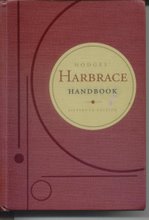By Brooks Clark
In the darkest hours of a sticky night in August 1973, no one on White Avenue noticed a stealthy figure crawling through a basement window of Hoskins Library. Inside, the intruder pried the lock off the door to the circulation department and went directly to two boxes, where they found a total of $102 and the master keys to the building. The burglar and accomplices then made their way to the top floor of the tower, which had been built in 1932 to house the collection of oriental and Turkish rugs, jewelry, sculptures, paintings, and Renaissance furniture—some 400 pieces in all—and several thousand volumes of art and travel literature that Louis and Eleanor Audigier had accumulated during 20 years living in Rome and donated to UT.
Louis Bailely Audigier had been born in 1858 in Switzerland and emigrated to Searcy, Arkansas, where he became a newspaper editor and publisher. In 1887, he married Eleanor Deane Swan of Knoxville. They first lived in Little Rock, Arkansas, where Audigier wrote for the Arkansas Gazette, then moved to Knoxville, where Audigier was a book printer and worked in various capacities on a monthly, The Industrious Hen, serving the poultry industry.
Eleanor was an artist, active in the Ossoli Circle, who helped organize the Knoxville Art League. The Audigiers lived in an elegant house called Crescent Bluff at 3100 Kingston Pike. In 1911, they traveled for two years in Greece, Egypt, and Palestine, then settled in Rome, where Louis took photos for the New York Times, including portraits of Mussolini and a Pope Pius XI, published several books of his pictures of Rome, traveled and lectured. Eleanor, meanwhile, collected all manners of art, originals and copies, old and new. She died in 1931, and was buried in Knoxville. After Louis remarried in 1933, he gave Eleanor’s art collection to UT in her memory. In 1936, Louis and his new bride returned to Knoxville and settled into a large Victorian home on East Magnolia Avenue. He died in 1943 and was buried in Little Rock.
In the relatively innocent era of 1973, there were no guards on duty or electronic surveillance cameras to watch over the Eleanor Deane Audigier Art Collection. The intruders came prepared: they had brought packing crates and straw packing material. They packed up some 80 objects on exhibit throughout the gallery and slipped them out the basement window. The list of the stolen goods ranged from five antique rugs and 23 sculptures to a mahogany model of a Venetian sedan chair, a brass French coffee pot from 1809, a 19th century nutmeg grater, and an Arabian dagger and scabbard.
Since the thieves knew exactly where to find the master keys, the police assumed it was an inside job, although lie-detector tests on 50 employees revealed nothing. The larcenists may not have been art experts: they took neither the five Raphael paintings nor some of the other most valuable artwork. Nor may they have planned what to do with the goods once they had them. The pieces have never shown up in local pawn shops or on the international markets. The Knoxville Police never found any clues to lead them to the identities of the thieves.
In 1978, the entire collection was moved to the McClung Museum, where it resides today in vault and storage rooms secured by several systems of locks, video surveillance cameras, and motion detectors.
To this day, the Hoskins Heist remains the largest theft of art in Knoxville history and UT’s most perplexing unsolved mystery. If your great uncle has ever wondered about a remote barn or warehouse full of packing boxes, please call me at 865-310-1277.












